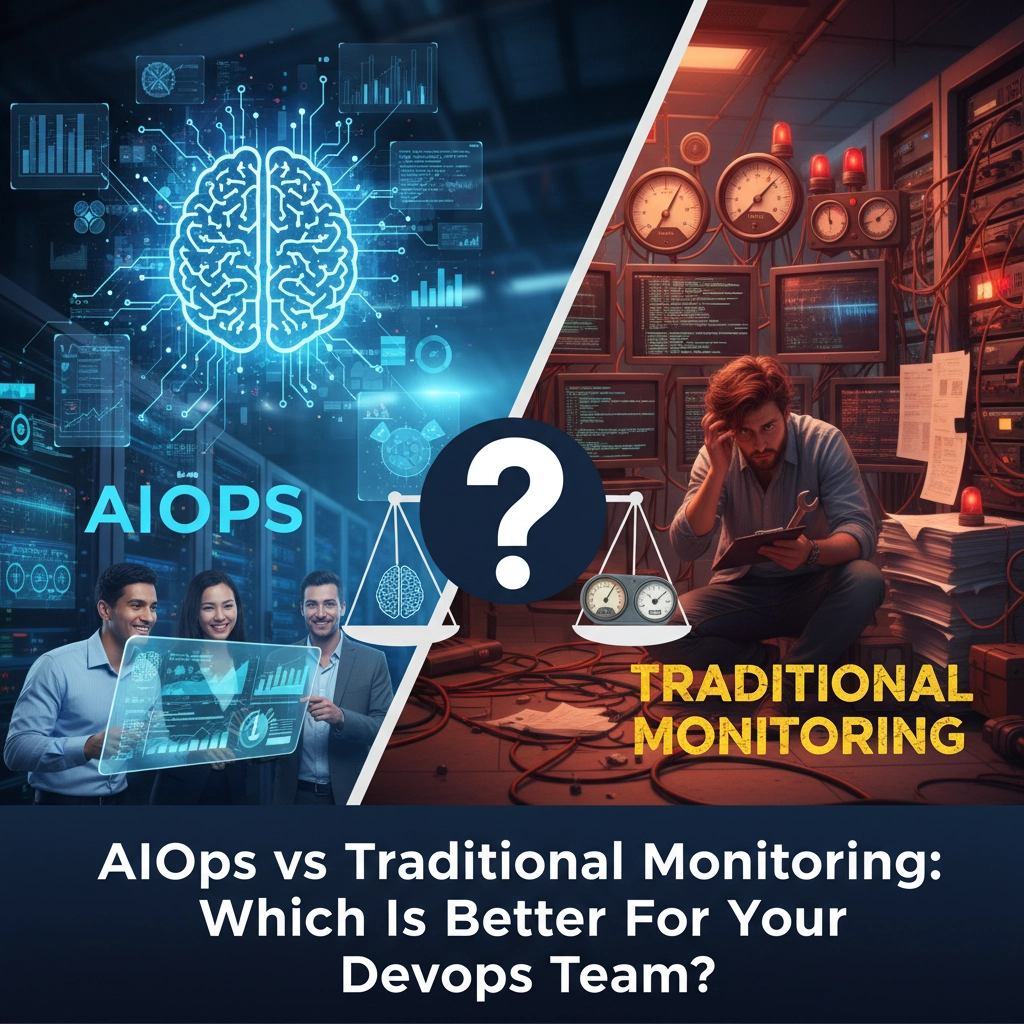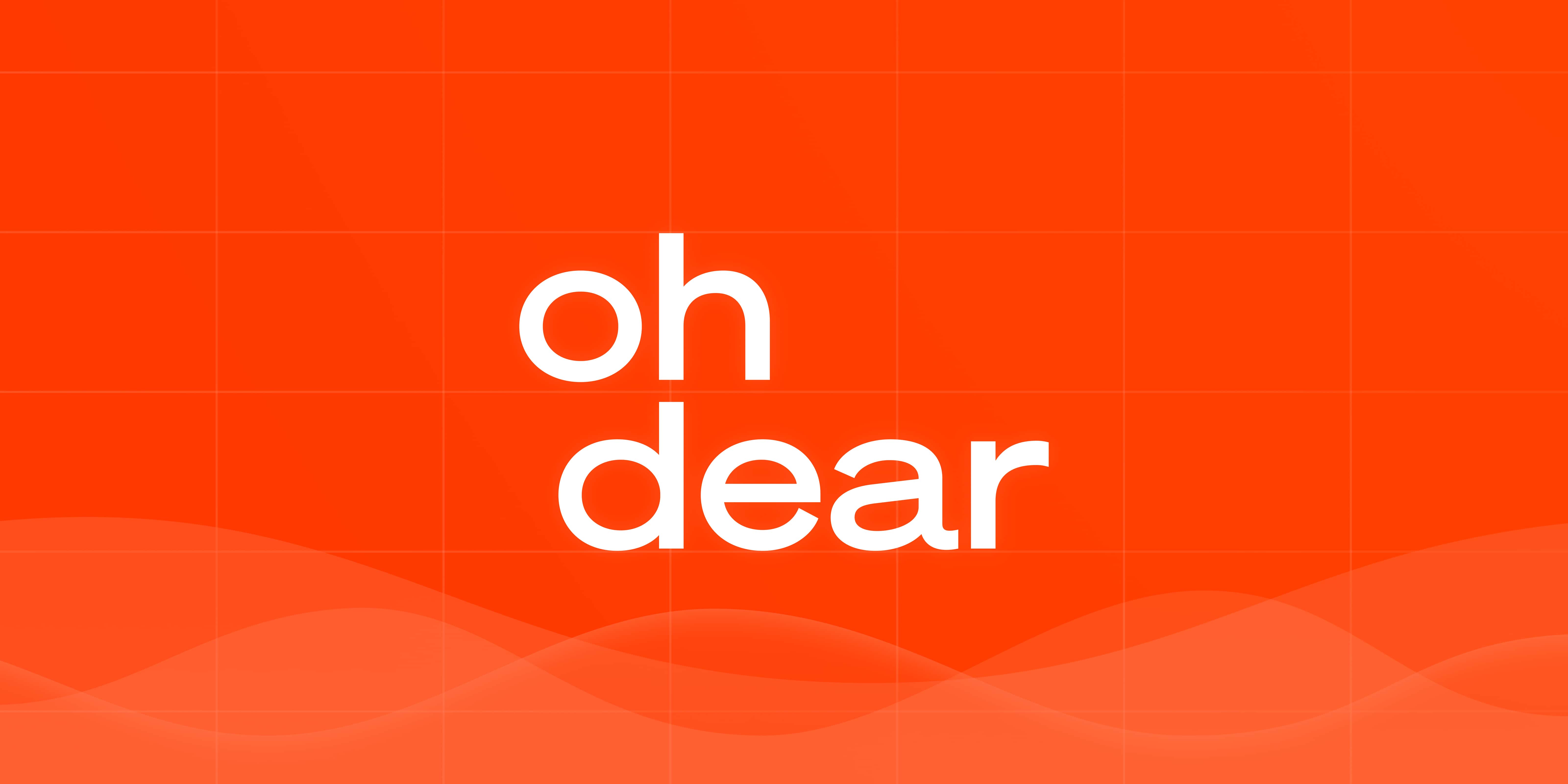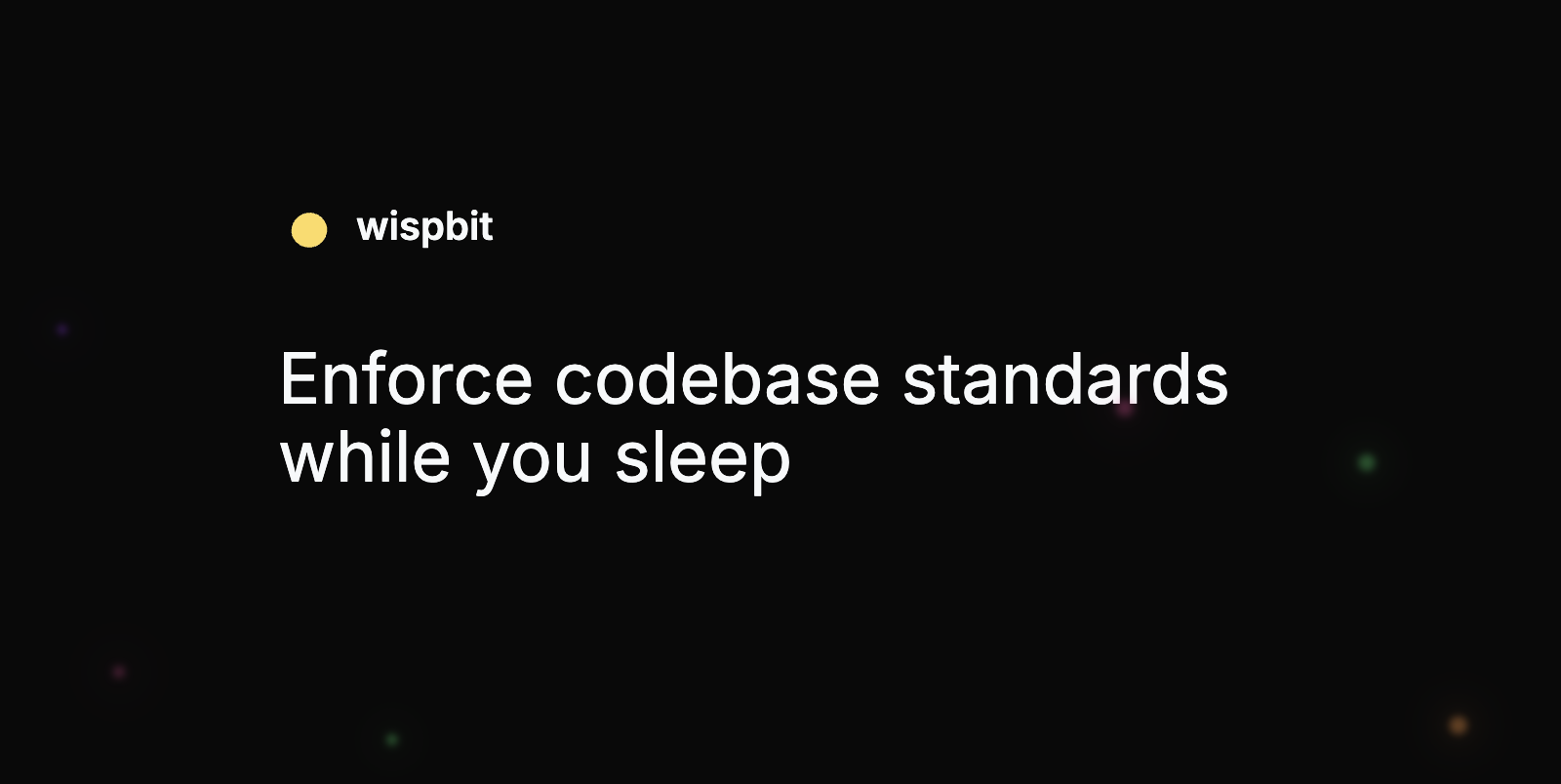DevOps Articles
Curated articles, resources, tips and trends from the DevOps World.
AIOps vs Traditional Monitoring: Which Is Better For Your DevOps Team?

The evolution from traditional monitoring to AIOps represents one of the most significant shifts in IT operations management today. DevOps teams face increasing pressure to maintain system reliability while managing exponentially complex infrastructures. This fundamental challenge has sparked debate about whether artificial intelligence-powered operations (AIOps) truly delivers superior value compared to established traditional monitoring approaches.
Understanding Traditional Monitoring Foundations
Traditional monitoring systems have anchored IT operations for decades through threshold-based alerting and static rule enforcement. These systems monitor predetermined metrics: CPU usage, memory consumption, network traffic: and trigger alerts when values exceed configured limits. The approach relies on human expertise to define meaningful thresholds and respond to incidents manually.
The methodology excels in environments where infrastructure remains relatively static and predictable. Traditional monitoring provides clear visibility into system performance through dashboards and reports that technical teams understand intuitively. Implementation requires minimal specialized knowledge, making it accessible to organizations with varying technical sophistication levels.
However, traditional monitoring operates fundamentally as a reactive system. Alerts fire after problems manifest, requiring rapid human intervention to diagnose root causes and implement remediation. This reactive stance becomes increasingly problematic as system complexity grows and the volume of potential failure points multiplies exponentially.
The AIOps Paradigm Shift
AIOps transforms monitoring from reactive alert management to proactive system intelligence. Machine learning algorithms analyze vast data streams: logs, metrics, traces, and events: to identify patterns that precede system failures. Rather than waiting for threshold violations, AIOps platforms predict anomalies and initiate automated responses before users experience service degradation.
The technology processes structured and unstructured data simultaneously, correlating seemingly unrelated events across distributed systems. Natural language processing capabilities enable AIOps platforms to interpret log messages, while time-series analysis identifies subtle performance trends that human operators typically miss.
AIOps platforms demonstrate particular strength in dynamic environments where traditional threshold-based monitoring fails. Cloud-native architectures, microservices deployments, and container orchestration create monitoring challenges that static rules cannot adequately address. These environments exhibit normal behavior patterns that fluctuate significantly based on workload, traffic patterns, and resource allocation decisions.
Alert Management and Noise Reduction
Traditional monitoring systems frequently overwhelm operations teams with alert storms during incidents. A single root cause: such as database connectivity failure: can trigger hundreds of dependent alerts across interconnected services. This phenomenon, known as alert fatigue, desensitizes teams to genuine critical issues and degrades overall response effectiveness.
AIOps addresses alert fatigue through intelligent correlation and noise reduction algorithms. Machine learning models identify relationships between alerts, grouping related notifications and suppressing redundant messages. Some AIOps implementations achieve noise reduction rates exceeding 90%, allowing teams to focus attention on genuinely actionable incidents.
The technology also provides context enrichment, automatically gathering relevant information about affected systems, recent changes, and potential impact scope. This contextual intelligence accelerates diagnosis and enables more informed decision-making during incident response procedures.
Scalability and Modern Infrastructure Demands
Traditional monitoring approaches struggle with the scale and complexity of contemporary IT environments. Multi-cloud deployments, containerized applications, and serverless computing architectures generate monitoring data volumes that exceed manual analysis capabilities. Static threshold management becomes impractical when infrastructure scales dynamically based on demand.
AIOps platforms are architected specifically for modern infrastructure patterns. They ingest and analyze data streams from diverse sources: cloud provider APIs, container orchestration platforms, application performance monitoring tools, and security systems. This comprehensive data integration provides holistic visibility across complex, distributed environments.
The technology adapts automatically to infrastructure changes, learning normal behavior patterns for new services and adjusting baselines accordingly. This adaptive capability eliminates the manual effort required to configure monitoring for frequently changing environments.
Performance and Operational Impact
Organizations implementing AIOps report significant improvements in key operational metrics. Mean time to detection (MTTD) decreases as predictive capabilities identify issues before they impact users. Mean time to resolution (MTTR) improves through automated root cause analysis and suggested remediation actions.
AIOps platforms also enable proactive capacity planning by identifying resource utilization trends and predicting future requirements. This capability helps organizations optimize cloud spending while maintaining performance standards. Some implementations report cost reductions of 20-35% through more efficient resource allocation.
The technology reduces manual effort required for routine monitoring tasks, allowing operations teams to focus on strategic initiatives rather than reactive firefighting. This shift in resource allocation often leads to improved job satisfaction and reduced operational burnout.
Implementation Considerations and Challenges
AIOps adoption requires significant organizational investment beyond software licensing costs. Teams must develop new skills related to machine learning model management, data science principles, and AI-driven workflows. The technology's effectiveness depends heavily on data quality and historical baseline establishment.
Organizations with limited observability maturity may find AIOps overwhelming initially. The platforms work best with comprehensive data collection across all system components, requiring instrumentation improvements that traditional monitoring might not demand.
Change management represents another critical success factor. Teams accustomed to manual incident response procedures must adapt to automated workflows and AI-generated insights. This cultural shift often requires executive sponsorship and dedicated training programs.
Cost-Benefit Analysis Framework
Traditional monitoring systems typically require lower upfront investment and ongoing operational overhead. Licensing costs remain predictable, and implementation complexity stays manageable for most organizations. However, the total cost of ownership includes hidden expenses related to alert fatigue, manual effort, and extended incident resolution times.
AIOps platforms command higher initial investment and require specialized expertise for optimal configuration. The technology's value proposition centers on operational efficiency gains, reduced downtime, and improved resource utilization. Organizations must evaluate these benefits against implementation costs and ongoing maintenance requirements.
Strategic Recommendations by Environment Type
Simple, monolithic applications with predictable traffic patterns often function adequately with traditional monitoring approaches. These environments benefit from straightforward threshold-based alerting without requiring sophisticated anomaly detection capabilities.
Complex, distributed systems across multiple cloud providers represent ideal candidates for AIOps implementation. The technology's correlation capabilities and automated analysis provide value that traditional monitoring cannot match in these scenarios.
Hybrid approaches offer practical middle ground for many organizations. Critical business systems can benefit from AIOps intelligence while less complex components continue operating with traditional monitoring. This strategy allows gradual capability building while demonstrating value in high-impact areas.
Future Trajectory and Decision Framework
The monitoring landscape continues evolving toward AI-driven approaches as system complexity increases and operational efficiency demands intensify. Organizations investing in AIOps capabilities position themselves for future infrastructure patterns that traditional monitoring cannot adequately support.
Decision-makers should evaluate their current infrastructure complexity, team capabilities, and strategic objectives when choosing between approaches. Traditional monitoring remains viable for organizations with simple, stable environments and limited growth expectations.
AIOps provides compelling advantages for organizations managing dynamic, complex infrastructures with demanding reliability requirements. The technology's predictive capabilities and automated intelligence offer operational benefits that justify investment costs in appropriate scenarios.
The most successful implementations often begin with pilot programs focusing on specific use cases or critical systems. This approach allows organizations to build expertise while demonstrating value before broader deployment initiatives.
The choice between AIOps and traditional monitoring ultimately depends on organizational context, technical requirements, and strategic priorities. Both approaches serve important roles in the monitoring ecosystem, with the optimal selection determined by specific operational needs and infrastructure characteristics.
Product
Useful Links
Made with pure grit © 2025 Jetpack Labs Inc. All rights reserved. www.jetpacklabs.com





